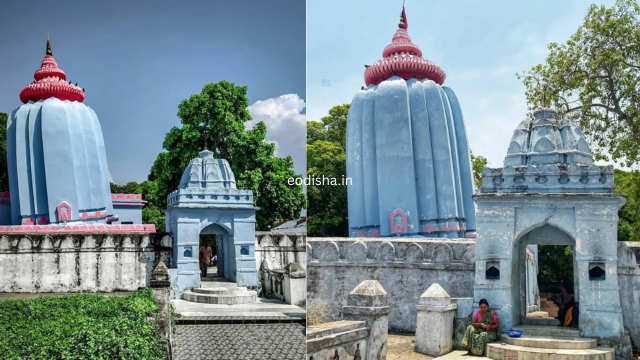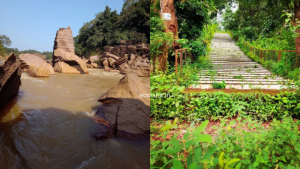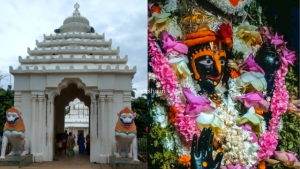The Huma Leaning Shiva Temple is a unique and sacred temple located in Huma village, around 23 kilometers from Sambalpur, in the state of Odisha, India. This temple is dedicated to Lord Shiva and is known across the country for its tilted or leaning structure. What makes it more interesting is that both the main temple and the surrounding smaller shrines lean at different angles, yet the top part of the temple remains vertical. It is also situated on the bank of the Mahanadi River, offering a calm and scenic environment for devotees and tourists.
Contents
History
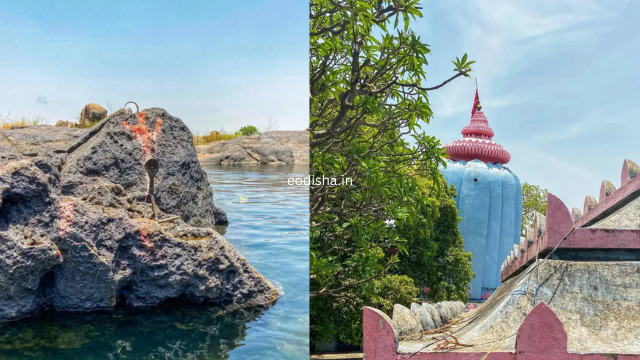
The temple was constructed in the 17th century during the rule of King Baliar Singh, a ruler from the Chauhan Dynasty of Sambalpur. The exact reason behind the temple’s leaning structure is still not fully known. Some historians believe that the tilt may have occurred due to uneven settlement of the foundation, while others consider it a divine phenomenon. Despite the tilt, the temple remains stable and continues to be a major spiritual destination.
There is also a strong belief among locals that Lord Shiva appeared at this site, and that is why the temple is considered sacred. Over the years, this temple has become not only a religious center but also a symbol of architectural curiosity.
Price & Ticket
-
Entry Fee: There is no entry fee to visit the temple.
-
Photography: Allowed outside the sanctum, but not permitted inside the main shrine.
-
Parking Charges: May range from ₹10 to ₹30 depending on vehicle type.
Best Things to Do
-
Offer Prayers to Lord Shiva: Participate in the rituals and seek blessings from the deity.
-
Observe the Leaning Structure: Closely observe how the temple leans and still stands strong after centuries.
-
Feed the Sacred Fishes: Visitors can feed puffed rice to the sacred fishes in the river near the temple.
-
Attend Maha Shivratri Festival: A large fair and cultural gathering take place during this festival, attracting thousands of pilgrims.
-
Enjoy River Views: The location on the riverbank provides beautiful views, especially during sunrise and sunset.
Restrictions

-
Footwear must be removed before entering the temple premises.
-
Photography is not allowed inside the sanctum sanctorum.
-
Visitors are advised to respect religious sentiments and maintain silence inside the temple.
-
Littering near the river and temple area is strictly discouraged.
How to Reach
-
By Road: Huma Temple is well connected by road. You can hire a taxi or take a local bus from Sambalpur, which is about 23 kilometers away.
-
By Rail: The nearest railway station is Sambalpur Junction, which is connected to major cities in Odisha and nearby states.
-
By Air: The nearest airport is Veer Surendra Sai Airport, Jharsuguda, which is about 75 kilometers away from Huma.
Where to Stay
-
Sambalpur City offers a wide range of accommodations including budget hotels, mid-range lodges, and guest houses.
-
Basic lodges or dharmshalas may be found in nearby villages, but staying in Sambalpur is more comfortable and convenient for travelers.
Nearby Places to Visit
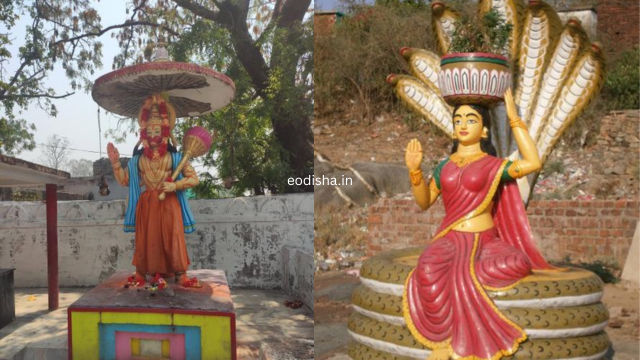
-
Hirakud Dam: One of the world’s longest earthen dams, located about 25 kilometers from Huma.
-
Ghanteswari Temple: A well-known temple with thousands of bells, about 30 kilometers from Huma.
-
Samaleswari Temple: Dedicated to Goddess Samaleswari, located in Sambalpur town.
-
Cattle Island and Hirakud Lake: Ideal for nature lovers and bird watchers, located near the reservoir area.
Frequently Asked Questions
What is special about the Huma Shiva Temple?
The temple is famous for its tilted structure, which leans without any structural damage, making it one of the few leaning temples in the world.
Is the leaning of the temple safe for visitors?
Yes, the temple is structurally stable and has been standing for centuries without collapse.
Can I visit the temple throughout the year?
Yes, the temple is open all year round, but the best time to visit is during winter or Maha Shivratri.
Are there food stalls or shops near the temple?
Yes, small shops and food stalls are available selling prasad, snacks, and religious items.
Is boating allowed in the Mahanadi River near the temple?
Boating is not a regular activity here, but during festivals, temporary arrangements might be available.
Are there guides available at the temple?
Local guides are sometimes available, especially during festivals. Otherwise, temple priests or locals may share information if asked politely.
Can I carry children and elders to the temple?
Yes, but visitors should note that there are some steps and uneven paths, so caution is advised.
Is there any legend or miracle associated with the temple?
Yes, many locals believe that the leaning structure is a divine miracle and that Lord Shiva himself chose this place to reside.

